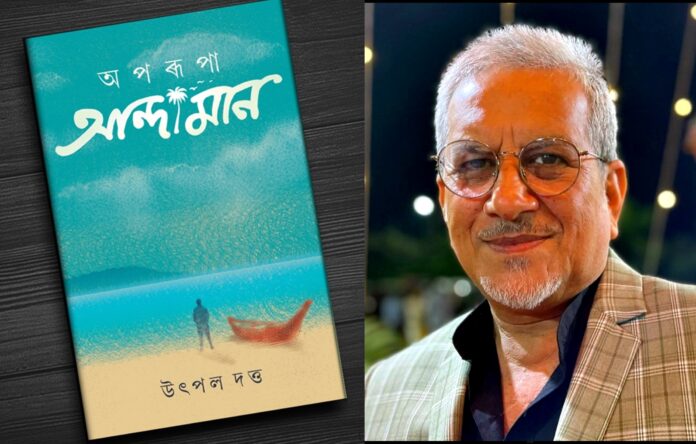Utpal Datta, a prominent film critic in India, is widely recognized for his contributions to cinema discourse. However, his first major published work was not a film critique but rather a travelogue, titled ‘Aparupa Andaman.’ This travelogue set a new trend in Assamese travel writing and challenged established norms.
The impending release of the second edition of ‘Aparupa Andaman’ is a testament to the enduring appeal of Datta’s travelogue. The first edition was published in 1993 and achieved instant popularity due to its unique destination and the vibrant narrative style employed by the author. The publisher of the book was Purbanchal Prakash and the same publication house is coming up with the second edition.
At the time of its release, ‘Aparupa Andaman’ captured the imagination of readers, primarily because of its destination and youthful narrative style. The Andaman Islands, a remote and exotic location, piqued the curiosity of readers seeking to embark on a vicarious journey. Moreover, Datta’s narrative style, characterized by its youthful exuberance, further heightened the book’s appeal. Prior to ‘Aparupa Andaman,’ Assamese travel literature was primarily the domain of socially significant individuals, and their writings maintained a predominantly serious and somber tone. Utpal Datta’s travelogue represented a departure from these conventions. It showcased that even an ordinary individual could embark on a journey and craft a travelogue that resonated with readers. This pivotal shift encouraged a wave of common people to share their travel experiences through the written word, democratizing the genre.
While ‘Aparupa Andaman’ found resonance with readers, it largely evaded the attention of literary critics. Datta himself provides an explanation for this phenomenon, stating that the book deliberately deviated from the established norms of travelogue writing, resulting in a narrative that was radically different. Critics found themselves in a perplexing position, unsure of how to evaluate the book. As a result, they refrained from offering substantive critique. Furthermore, the book’s subsequent disappearance from print contributed to its obscurity, rendering it inaccessible to newer generations of literary critics.
In a discussion, Datta elaborated on this aspect: “This book had not followed the set norms of travelogue writing. It was radically different. I feel the critics failed to understand the essence of the new narrative; they were in a puzzle—what to comment on—good or bad? So, they avoided commenting on the book. The new critics do not know about this book as it was out of print.”
In a notable revelation, Utpal Datta disclosed his aspiration to transform ‘Aparupa Andaman’ into a travel film. This dream, though unrealized thus far, continues to fuel his creative ambitions. The notion of translating his narrative into cinematic form underscores the enduring influence of his travelogue and the potential for multimedia adaptation.
‘Aparupa Andaman’ stands as a seminal work in Assamese travel literature. Its departure from conventional norms, democratization of travel writing, and dream of transformation into a film attest to its enduring significance. The second edition release promises to rekindle interest in this transformative piece of travel literature and its potential as a source of cinematic inspiration.
#UtpalDatta #AparupaAndaman #AssameseTravelWriting #LiteraryShift #AndamanJourney #TravelNarratives #CinematicDreams #AssameseLiterature #NewTravelogue #LiteraryCritique
Link: https://cutt.ly/JwTuUd49





[…] post Utpal Datta’s ‘Aparupa Andaman’: A Paradigm Shift in Assamese Travel Writing: By Shubham Panch… appeared first on Borok […]
[…] post Utpal Datta’s ‘Aparupa Andaman’: A Paradigm Shift in Assamese Travel Writing: By Shubham Panch… appeared first on Borok […]
[…] post Utpal Datta’s ‘Aparupa Andaman’: A Paradigm Shift in Assamese Travel Writing: By Shubham Panch… appeared first on Borok […]
[…] post Utpal Datta’s ‘Aparupa Andaman’: A Paradigm Shift in Assamese Travel Writing: By Shubham Panch… appeared first on Borok […]